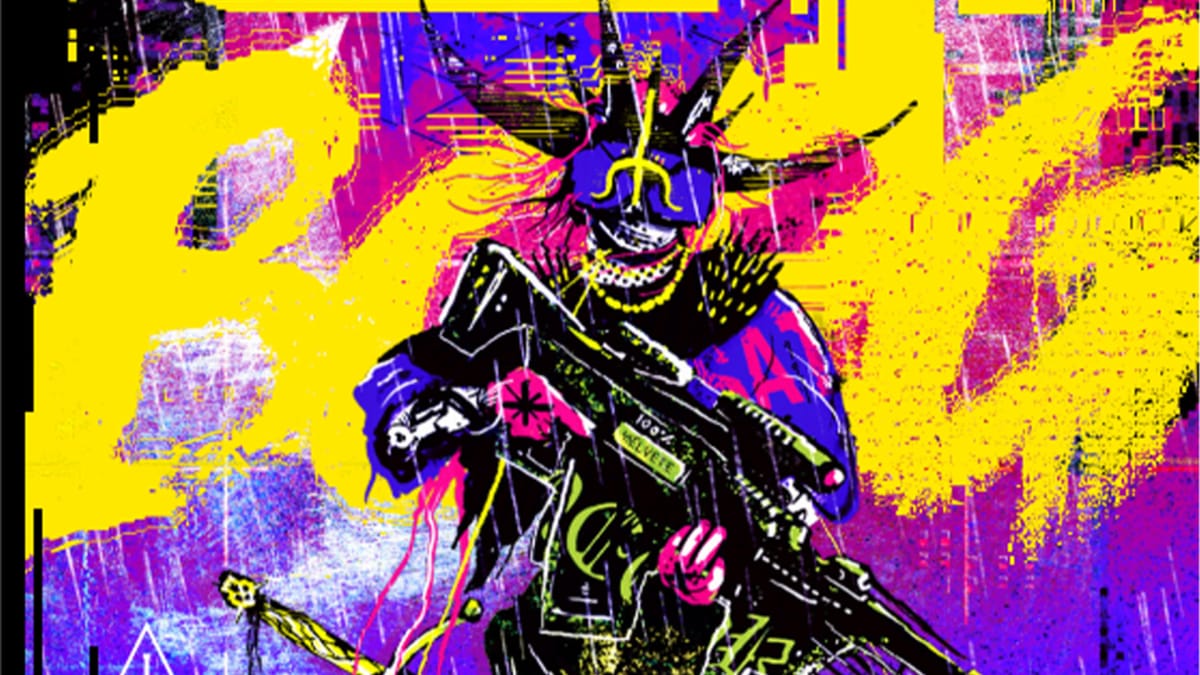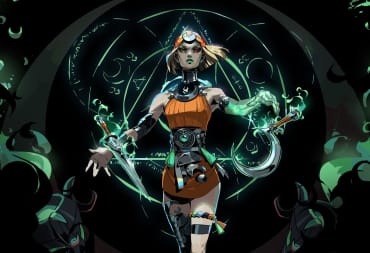Cyberpunk has always been a pretty popular part of tabletop gaming. I mean the genre specifically, though obviously the original release of Cyberpunk in 1988 was a huge part of that popularity. Since then, numerous other RPGs have sprung up with their own takes on the genre, from Shadowrun’s blending of fantasy and cyberpunk, to Bubblegum Crisis literally adapting a Cyberpunk anime into an RPG. Cy_BORG is another attempt on the genre from the folks who bough us pitch-black fantasy TTRPG MORK BORG. We got a chance to take a first look at the core Cy_BORG rules to see how it shapes up.
Much like MORG BORG, Cy_BORG can best be described as ‘highly stylized’. Both games are incredibly dark in tone, though the black metal fantasy has been swapped out for a nihilistic anarcho-punk tone and asethetic. The tone smacks you in the face right out of the gate, with a loud, bright and garish cover, setting the mood in about as efficient a way as it’s possible to do.
The focus on art and great design is a huge part of Cy_BORG, and it’s easy to tell just how much work went into making the book as visually pleasing as possible. There are rarely huge pages of text, with many pages taken up by illustrations, diagrams and maps that help to visually represent what any text happens to be talking about. It’s a great way to supply lore and rules information without becoming overwhelming, though the dedication to visuals could make following the flow of the text a little rough for some people.

When you dive into the book, the first thing you’re presented with is the lore and world setting. Rather than front-loading you with some in-universe jargon or letters between characters you’ve never heard of, Cy_BORG sets out the world, what it’s like living there, and who the different inhabitants are within a few short pages with minimal text. It’s actually incredible how much information the book manages to pack in, and doing so in just such a way that it’s incredibly easy to digest.
The best example of this is the book's opening section, discussing the different regions of the game’s setting, the city of Cy, as well as the different factions that live within. The scene is set with huge 2-page spreads of art and some flavor text that sets out the world’s apocalyptic past, and the different groups of humanity clinging to life in the city. Then there’s an awesome map color-coded with different territories, and the sections following give some details on the factions and what their different territories are like. It’s an excellent example of covering information as quickly and simply as possible.
This design philosophy is also reflected in Cy_BORG’s rules. From the get go, the book tells you that every single rule in the book can be broken, except one. The rule being that no player character can be loyal or sympathetic to the corps, cops, or the capitalist system, reinforcing the game’s anarchistic leanings with a crowbar. It also serves to let you know that the approach to mechanics is pretty chill. Even when rolling a character you can completely ignore the class system and create whatever it is your cybernetically-enhanced heart desires.

You’ll probably be familiar with the way that the game works if you’ve played many other TTRPGs. The rules are incredibly simple, mostly relying on rolling dice and combining the result with one of your ability scores to get a result. There is one key difference here, in that NPCs and enemies not requiring much in the way of stat blocks or much dice rolling at all. The only time an NPC will have to roll is if they’re put in a situation where a player would have to complete a test, in which case they roll an unmodified D20.
This does a huge amount of work towards streamlining the planning on running of a game. There’s no need to come up with fancy backstories, roll up characters, or use pre-made ones for your NPCs, and you can focus entirely on the steering of the narrative. The entire book is filled with handy shortcuts, with tables to roll on for everything from character names and histories, to random character quirks and affiliations. It feels like you can start running or playing a game from only a few moments after opening the book.
In aid of that, there’s an introductory mission to run called Lucky Flight Takedown, a heist that perfectly encapsulates the world and types of stories you can tell in it. The players are tasked with breaking into a Corp-owned mega casino to destroy some debt records, and right off the bat the anti-establishment tone is set out in a heartbeat. You’re being employed by a down-and-out man to help clear his entire neighborhood of debt imposed on them by a powerful corporation, and you’re going to have to use subtlety and stealth to do it.

This heist isn’t only fantastically presented with the same maps and illustrations found elsewhere in the book, but it’s also a perfect choice for getting players into a new game for the first time. They’re immediately presented with a challenge, and enough information to plan out how they’re going to approach. The target is laid out in such a way that they’ll have multiple equally viable options for attempting the job, and there’s nothing better for getting a group invested then having them come up with a plan to solve a problem.
From there, the adventure devolves into a lot of chaos and death, or at least, in my personal experience it did. It’s true what they say, give your player group a chance to blow something up, and they will. Still, it was an ending that felt very in-spirit with Cy_BORG itself. It was a big over-the-top firework of death and destruction caused by a group that looks like they’d fallen through a rehab clinic during the Paris Fashion Week of 2099, and I can say that I’ve never had a more immediately positive response about a new game than I did with this one.

Our look at Cy_BORG is all too brief, but already, I’m calling this my favorite TTRPG of the past 15 years. I've not enjoyed a game like this since Shadowrun 2nd Edition. No other game in recent memory manages to achieve this level of world-building, and to do it all in a way that felt as pleasant as if you were reading a novel rather than a rulebook is astounding. To cap it all off, the rules are only as a complex as they need to be to facilitate the gameplay, and the so-called ‘golden rule’ of RPGs (that rules are made to be broken) is so clearly at the forefront of the designers mind. The sheer brilliance on display here makes me want to go back and look at MORK BORG with a closer eye.
Previews you can trust: To ensure you're getting a fair, accurate, and informed review, our experienced team spends a significant amount of time on everything we preview. Read more about how we review games and products.
Have a tip, or want to point out something we missed? Leave a Comment or e-mail us at tips@techraptor.net












